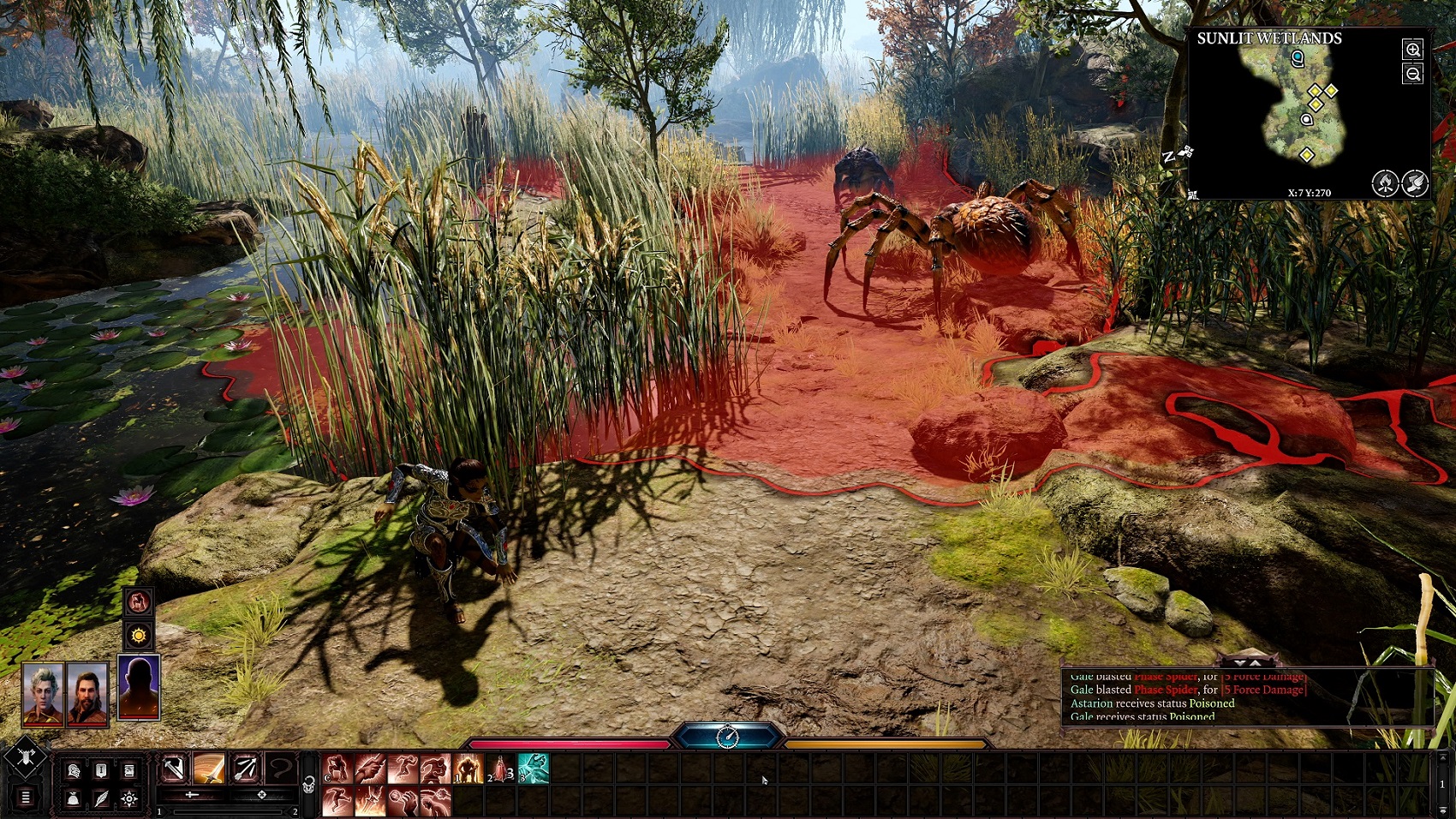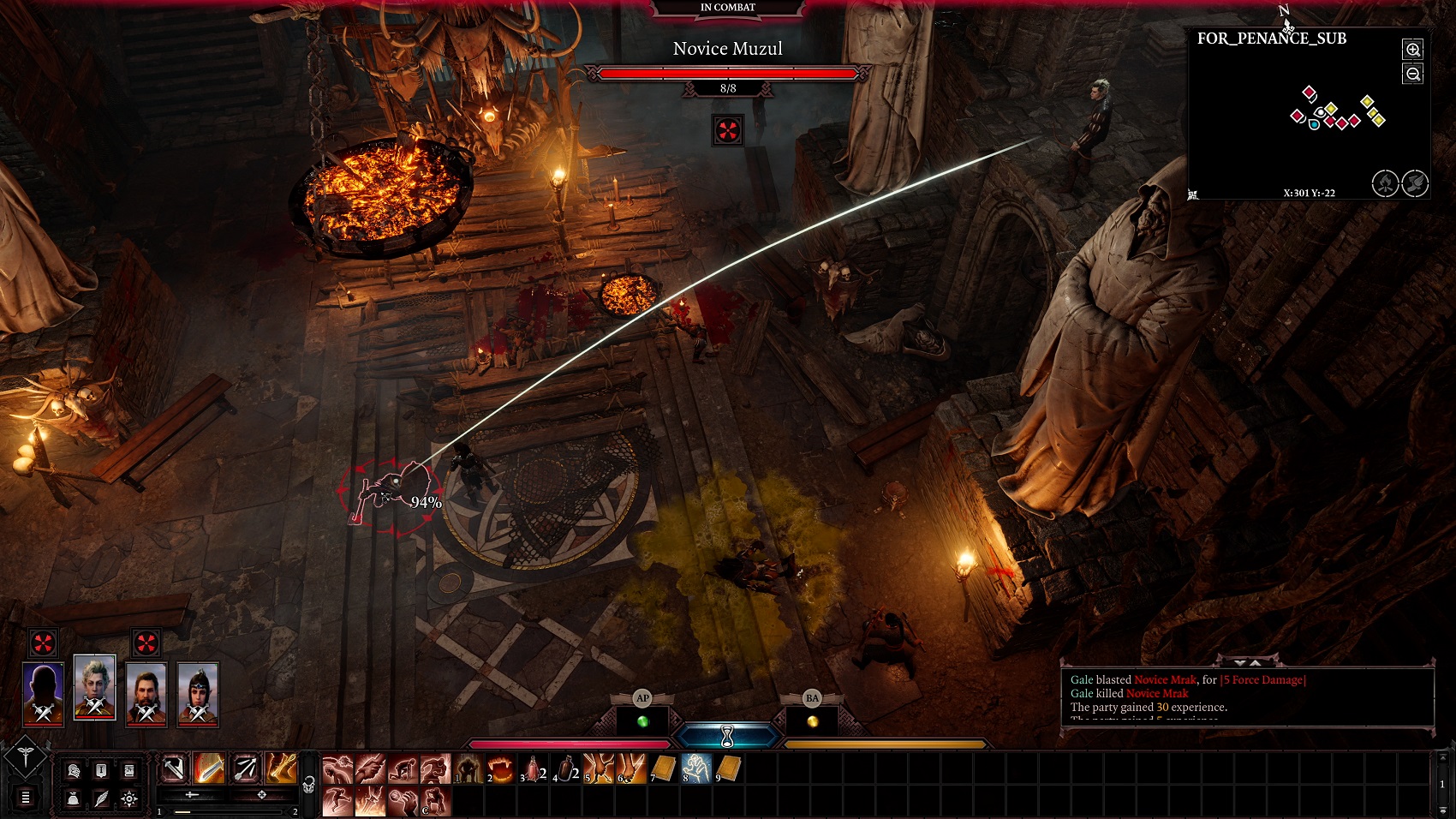The world’s greatest roleplaying game is, of course, a staple of any tabletop gaming discussion, but it goes far beyond that. Dungeons & Dragons has spawned several successful lines of fantasy literature, board games, and plenty of video games as well. Perhaps none more recognizable in the realm of computer RPGs than the Baldur’s Gate series.
The first two Baldur’s Gate games were published by Interplay and developed by Black Isle Studios and Bioware (yes, the same studio now known mostly for massively popular franchises such as Mass Effect, Dragon Age, and Knights of the Old Republic, as well as the ill-received Anthem) and are often regarded as two of the finest RPGs of all-time. A third game, The Black Hound, was in development but ended up getting canceled.
During E3 2019, Larian Studios revealed they were developing and publishing the next full installment in the legendary franchise, dubbed simply Baldur’s Gate 3. Larian is the studio behind both Divinity: Original Sin games, which are regarded as some of the best modern RPGs of this generation, so you’d be hard-pressed to find anyone better suited for the job.
Earlier this month, I was invited to a pre-PAX East showing of the game in San Francisco, CA, that consisted of a hands-off demo presentation showing an impressive introductory CGI cinematic and a couple of hours of actual gameplay. As someone that has played and enjoyed both of the Divinity: Original Sin games, everything about Baldur’s Gate 3 was immediately familiar in all of the best ways.
Larian has done a wonderful job adapting their style to fit with the classical fantasy tone of D&D without losing the core of what makes their games stand out.
Character creation is as deep as you’d expect. In addition to picking from classic D&D races like humans, half-elves, drow, and more, you can assign a background as well, which works similarly to D&D fifth edition, as well as Divinity: Original Sin 2. This gives a bit more color and detail to your character’s origin, providing them a separate, more personal purpose beyond the game’s larger narrative. But it’s all optional: you can make a character from scratch instead if you’d prefer.
By default, the game appears to be presented from a top-down angled perspective with a floating camera, but you can zoom in to emulate a third-person over-the-shoulder style instead if you’d prefer.
What’s immediately apparent to anyone that played the original Baldur’s Gate games is how combat is handled differently here. In the past, Infinity Engine games and most D&D games from past years use a real-time with pause format. This means that combat happens in real-time with player characters, NPCs, enemies, etc. all moving around, attacking, and using their abilities as they’re available concurrently.
That can get very hectic, so you’re often given the ability to pause everything, issue commands, then resume combat. It’s a well-respected hybrid approach that’s still used to this day for many RPGs.
But in Baldur’s Gate 3, combat is very similar to Divinity: Original Sin 2 in that it’s entirely turn-based. Ironically, combat in Baldur’s Gate 3 now more closely resembles combat in tabletop D&D. Characters take turns moving around the battlefield, performing actions, and trading blows as determined by their initiative order. It plays out just like a real game of D&D would and it flows extremely well.
Since this is heavily based on D&D, dice rolls play a huge factor. Rather than make you manually click specific dice to do things, everything is calculated under the hood so you just see the results. But there’s a log that you can toggle on and off if you want those nitty-gritty numbers and details.
Though, there are two exceptions to this that I saw, which require your awareness of the all-powerful dice rolls. One instance is when you land a critical hit. In this case, a d20 shows up on-screen just before getting sliced in half to celebrate your big damage. The other instance is during certain key ability checks.
For example, let’s say you want to persuade a guard to let you through a door that they’re protecting. Depending on how proficient you are in that skill, you’ll need to get a certain number on the d20 roll, just like actual D&D, so the result on the die is randomly selected on-screen as if you had actually rolled it. This adds some unpredictability to everything and very clearly ties the game back to its roots.
Just like in Divinity: Original Sin 2, dialog is handled very carefully in Baldur’s Gate 3. One thing I always hated about RPGs is that you’re forced to pick dialog options that are pre-scripted by designers and writers that just don’t think like you do. As a result, the options usually never really capture what you want to say.
Larian’s response to that is to remove actual dialog options and instead give you a list of tones and feelings to pick from, then you fill in the blanks in your head.
For example, if a bandit says you have to pay up or else you’re dead, rather than letting you pick between, “No way! Eat this!” or “Here’s 100 gold, sorry for the trouble,” it might instead say something like, You refuse and threaten him back, or, Pay the bandit and go about your business. Notice the difference?
The story in Baldur’s Gate 3 is still a bit vague from what I’ve seen thus far, but I will say it appears that knowledge of the previous two games isn’t really required. The CGI cinematic we saw at the start of our demo was tremendously epic, complete with a mind flayer abducting people from a city, injecting disgusting illithid tadpole leeches into their eyeballs, and nearly evading an onslaught of powerful dragon attacks while barreling through the sky. It was an excellent cutscene.
The demo picks up after the actual introductory moments a short ways into the adventure. After surviving the capture and crash, the player discovers that unless they figure out what’s going on and how to cure themselves or remove the tadpole from their skull, they’ll eventually transform into a mind flayer as well. That is not a desirable outcome.
What proceeds is sort of like a greatest hits of D&D moments. There were some epic fights against large groups of enemies that used the terrain in clever ways, things went horribly wrong after some bad misses and poor die rolls, and eventually, victory was achieved by thinking outside the box.
Even though I didn’t get to go hands-on with Baldur’s Gate 3, based on Larian’s experience and track record, the history of the franchise, and the iconic nature of the D&D brand, I have no issues in saying that this is clearly shaping up to be one of the best RPGs in recent memory. In fact, if the flow of gameplay between combat and non-combat experiences feels right with its turn-based mechanics, this could very well end up being the greatest video game based on D&D of all-time. Fingers crossed they pull it off.
Baldur’s Gate 3 will support multiplayer in the form of both local split-screen couch co-op for 2 players and up to 4 players total online, but I didn’t get to see that in action during the demo presentation I attended. At this point, all we really know is that the game is coming to Early Access on PC in a few months.
Stay tuned to GameSkinny for more on Baldur’s Gate 3, including coverage of the game’s official gameplay reveal at PAX East.
[Note: This preview is based on a hands-off demo presentation of a pre-release build seen during an event in San Francisco, CA, hosted by Larian Studios.]












Published: Feb 27, 2020 06:15 am